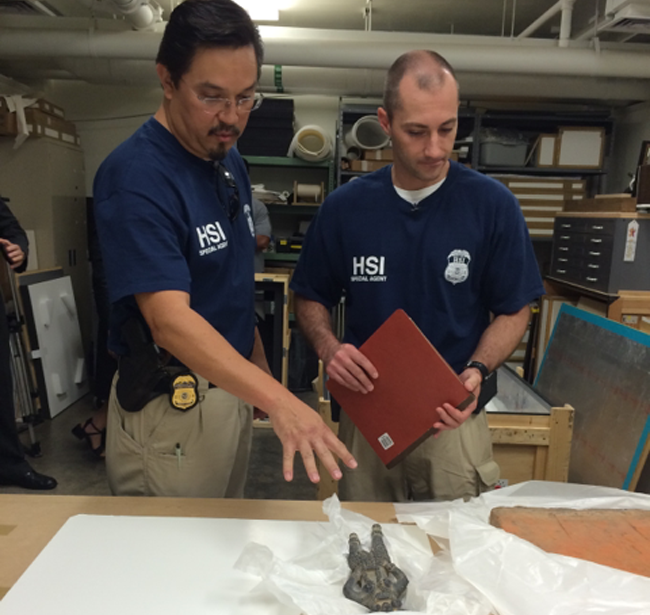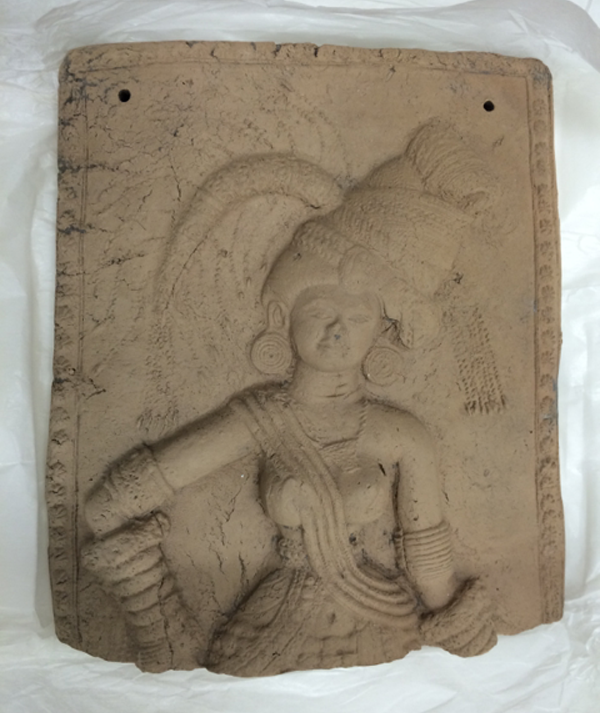ICE partners with Honolulu Museum of Art to recover antiquities from India
HONOLULU — Representatives from the Honolulu Museum of Art Wednesday transferred seven rare antiquities to the custody of U.S. Immigration and Customs Enforcement’s (ICE) Homeland Security Investigations (HSI) after an ongoing international smuggling probe by HSI determined the objects had likely been looted from India and brought to the U.S. illegally.
HSI officials underscore museum officials were unaware of the items’ provenance when they entered the institution’s collection between 1991 and 2003. HSI Honolulu originally contacted the museum in 2014 after HSI special agents in New York City determined that a 2,000-year-old terra cotta rattle identified in a case known as Operation Hidden Idol might have found its way into the museum’s collection. Subsequently, the museum, working in close collaboration with HSI, identified six other Indian artifacts in the institution’s possession with potential ties to Operation Hidden Idol.
“Looting is a serious problem in the art market and all buyers of art, including museums, need to be mindful that some antiquities have been illegally obtained,” said Stephan Jost, director of the Honolulu Museum of Art. “Over the past several years, American art museums have become progressively more rigorous in vetting the history of objects they acquire. Clearly the museum could have done better in the past. We hope that bringing attention to this problem and doing the right thing will help reduce looting of cultural objects. Partnering with HSI is the most effective way to combat this ongoing issue.”
Wednesday afternoon HSI formally took custody of the seven artifacts linked to the ongoing investigation. In addition to the rattle resembling the Buddhist god of wealth, the objects include figurines, architectural fragments and tiles, which were removed from religious temples and ancient Buddhist sites. Many of the items can be traced to one of India’s richest archeological regions, Chandraketugarh. The objects have been packed by the museum and will be shipped to New York where they will serve as potential evidence in Operation Hidden Idol. Ultimately it is anticipated the items will be forfeited and repatriated to India.
HSI’s Operation Hidden Idol focuses on the activities of a former New York-based art dealer, Subhash Kapoor, who is currently in custody in India awaiting trial for allegedly looting tens of millions of dollars’ worth of rare antiquities from several nations. Over the last three years, HSI special agents have executed a series of federal search warrants targeting Kapoor’s Manhattan gallery, along with a warehouse and storage facility linked to the dealer. Additionally, three individuals have been arrested in the U.S. for their role in the scheme. The estimated value of the artifacts seized so far in the case exceeds $100 million.



